Fall Velocity for Live-bed Contraction Scour Calculation Using HEC-18 Equation
To apply the HEC-18 Equation 6.2 (Figure 1) to calculate the live-bed contraction scour depth, the bed material particle D50 fall velocity needs to be determined to estimate the coefficient K1 (Figure 2).
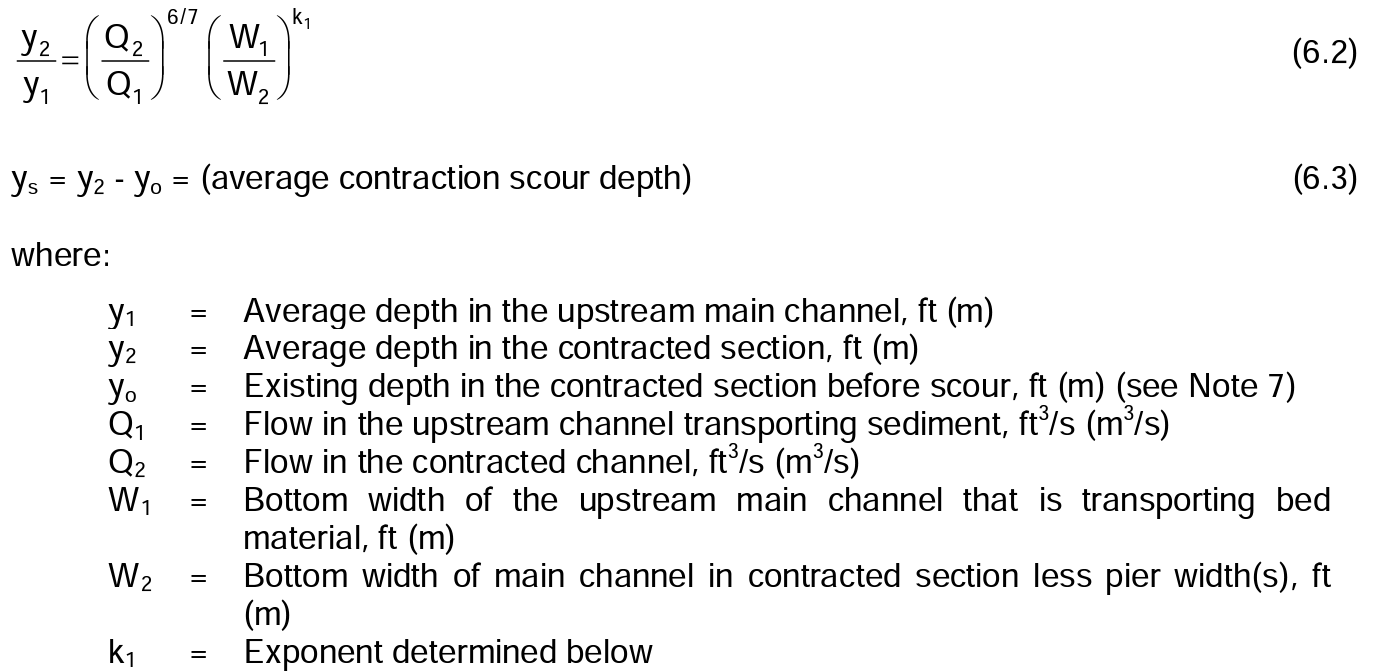
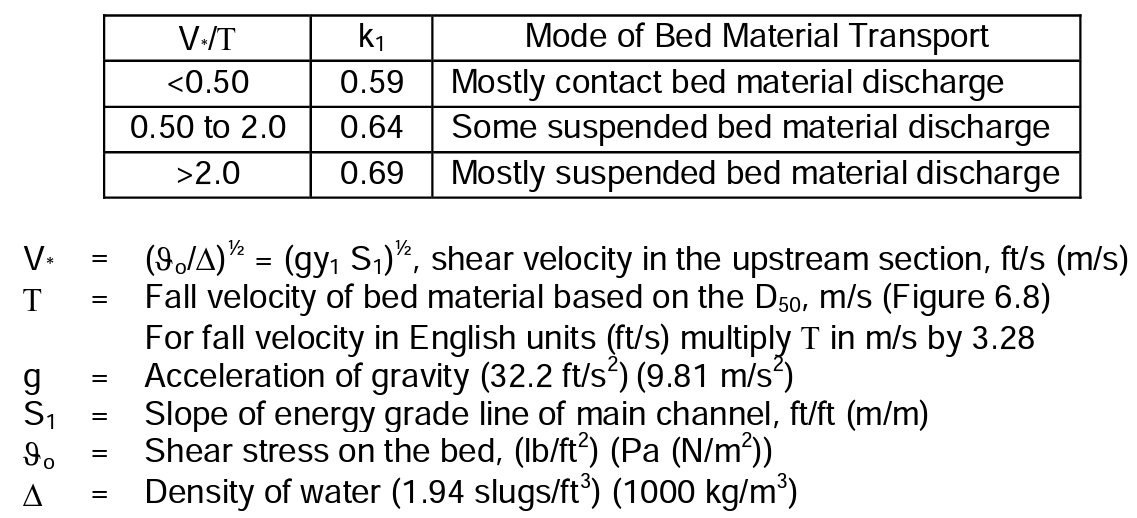
HEC-18 Figure 6.8 can be used to estimate the fall velocity for D50 up to 10mm (Figure 3).
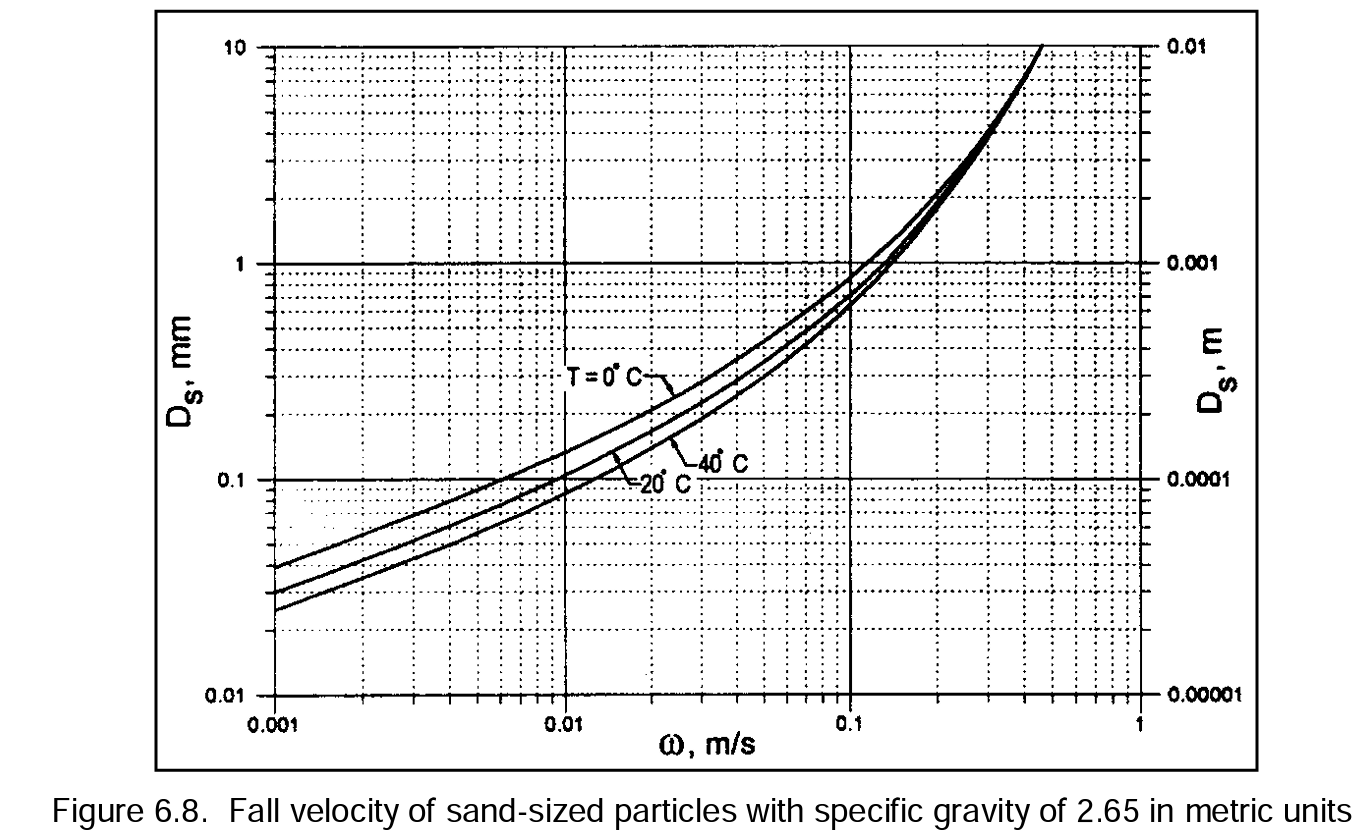
To automate the fall velocity calculation process and more importantly, to estimate the fall velocities for D >10mm, two equations are introduced here whose results are in good accordance with HEC-18 Figure 6.8.
Van Rijn Equation (HEC-RAS Hydraulic Reference Manual)
Based on Stokes’ law, Van Rijn proposed a set of 3 equations to estimate fall velocities for different sizes of particles (Figure 4). HEC-RAS Hydraulic Reference Manual introduced the equations, however, the manual has a typo: the diameter d’s exponent of 2 is missing in the first equation for 0.001<d=<0.1mm. Figure 4 below has added back the exponent.
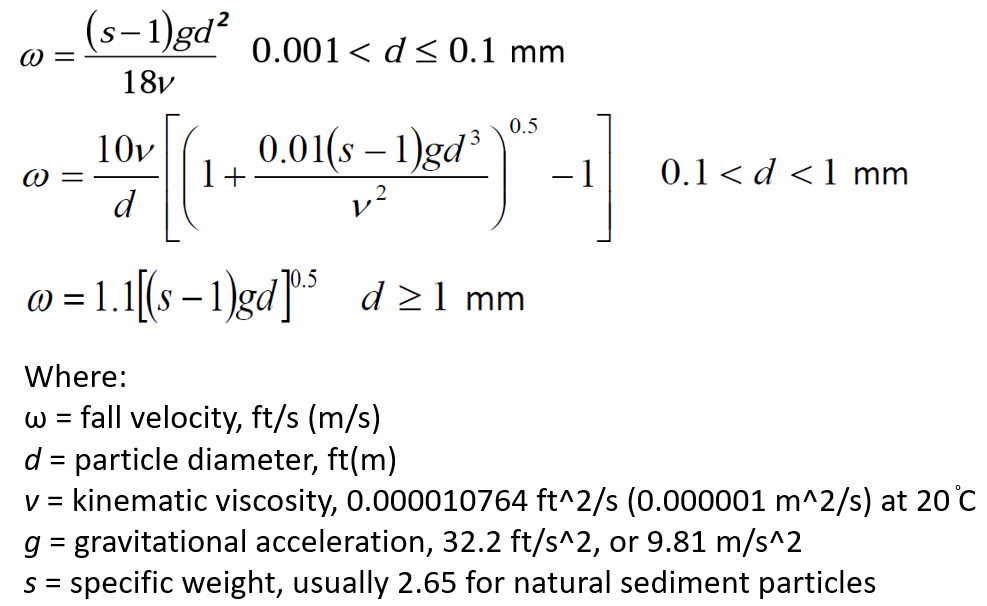
Ferguson Church Equation
Ferguson and Church proposed another equation to calculate the fall velocity (Figure 5).
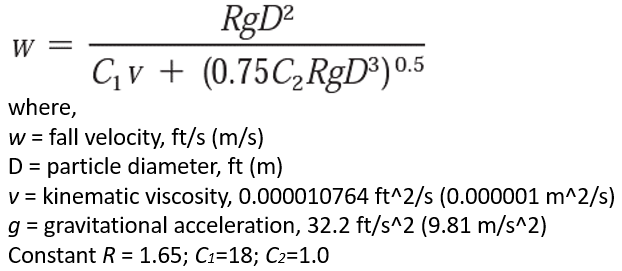
The two equations including the suggested constants introduced above are for fall velocities of natural sediment particles at water temperature around 20°C (68°F). The results of the two equations match well especially at D<10mm (Figure 6).

The equations and the suggested constants are only meant to estimate the fall velocity of D50 and HEC-18 live-bed contraction scour Equation 6.2 coefficient K1. Their application for other purposes should be carefully evaluated for suitability.
1 COMMENT